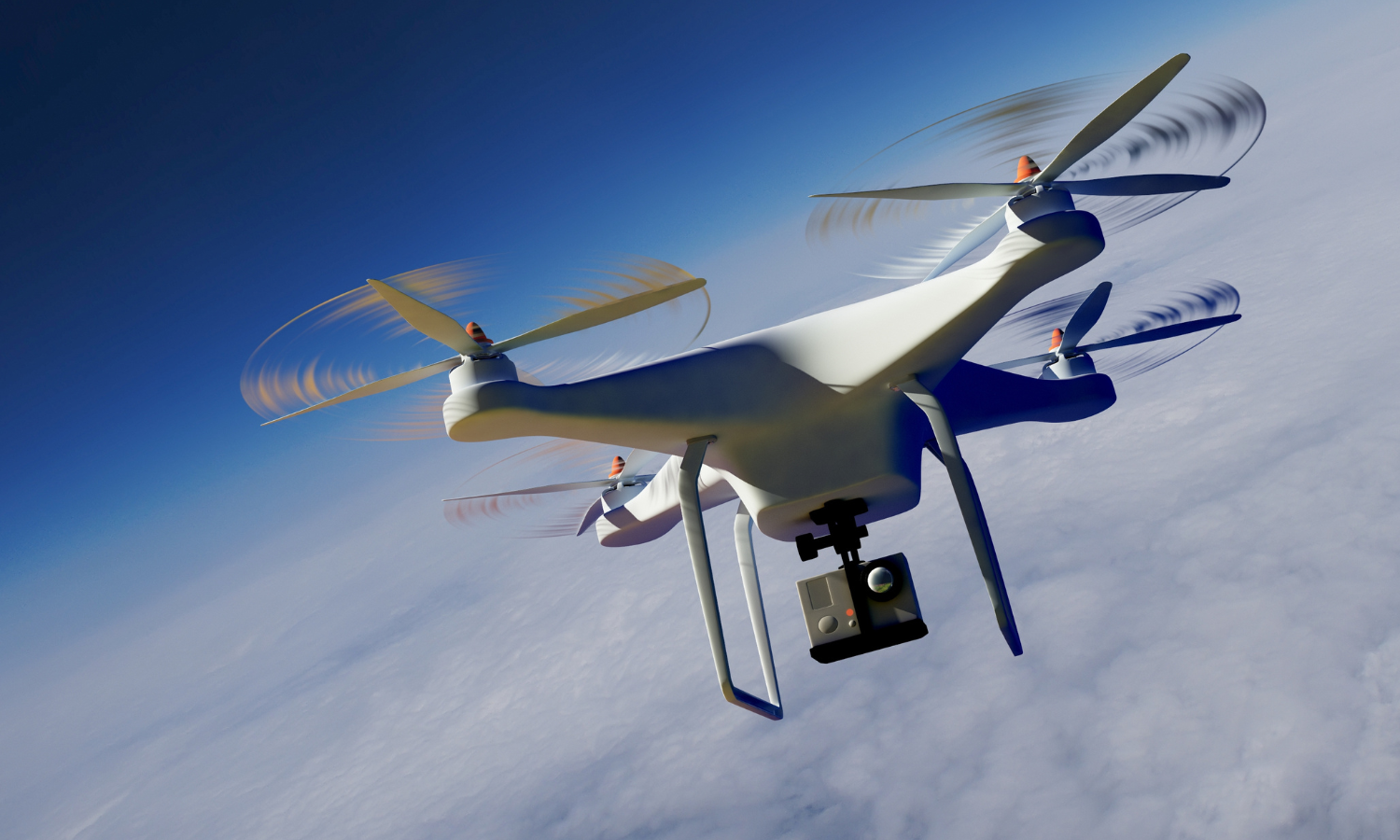
03 Oct What is Airspace and How Does it Affect Drones?
by Katherine H. Miller
October 3, 2023
“Airspace” refers to the air above the surface of the Earth–often delineated by the boundaries of the land below.[1] In the United States (US), the Federal Aviation Administration (FAA) asserts that FAA rules apply to the entire National Airspace System[2] – stating that “there is no such thing as “unregulated” airspace.”[3]
However, there is a distinction between “regulation” and “control,” and the recent push to integrate uncrewed aerial vehicles (UAV, or drones) into the national airspace has repeatedly highlighted the question of who, exactly, controls the airspace below 400 feet. This is classified as Class G airspace, which is uncontrolled by air traffic control,[4] and is where drones may fly.
Private landowners control the airspace above their land[5] – but how far up exactly that right goes, or at what height a drone flying overhead is technically trespassing, is ambiguous. What is certain is that even under 400 feet, there are certain places where drones may not fly.[6] “Controlled” airspace is where air traffic controllers are actively directing aircraft,[7] such as around airports and at certain altitudes.
It is important for this airspace to be highly regulated because of the potential for catastrophic collisions. Even bird strikes can be devastating at high velocity,[8] and drones pose a worse risk thanks to their rigid, composite frames.[9] Where Class A airspace starts (18,000 feet above sea level),[10] commercial planes fly on average 550-600 miles per hour,[11] and it is difficult for manned aircraft to see and avoid a drone while flying.[12] Right now, most (commercially available)[13] drones cannot physically fly that high – DJI, for example, is a prominent drone designer and manufacturer, and most of its drones can only fly up to 1,640 feet[14] – but many drones are capable of entering other controlled airspace (Classes B-D), such as that around airports and military bases.[15] There is a lot of discussion about how those infringing drones should be dealt with, or whether they should be built in a way that limits where they are capable of flying in the first place. Either way, as recreational drones become more common, it is extremely important for their operators to know exactly how they may interact with airspace.
[1] Frank Davis Adams, Nat’l Aeronautics and Space Admin., Aeronautical Dictionary 13 (1959).
[2] Airspace 101 – Rules of the Sky, Fed. Aviation Admin., https://www.faa.gov/uas/getting_started/where_can_i_fly/airspace_101 (last updated Aug. 30, 2021).
[3] Id.
[4] Fed. Aviation Admin., Air Information Manual 3-3-1.
[5] United States v. Causby, 328 U.S. 256 (1946).
[6] Airspace 101, supra note 2.
[7] Fed. Aviation Admin., Air Information Manual 3-2.
[8] Threats to Birds: Collisions – Aircraft, U.S. Fish & Wildlife Services, https://www.fws.gov/story/threats-birds-collisions-aircraft (last visited Sept. 26, 2023).
[9] See Franke et al., An Analytical Model to Determine the Impact Force of Drone Strikes, 13 CEAS Aeronautical J. 69-84 (2022).
[10] Fed. Aviation Admin., Air Information Manual ENR 1.4 ATS Airspace Classification.
[11] Flying Staff, How Fast Do Commercial Planes Fly?, Flying Mag. (June 24, 2022), https://www.flyingmag.com/guides/how-fast-do-commerical-planes-fly/.
[12] Airspace Restrictions, Fed. Aviation Admin., https://www.faa.gov/uas/getting_started/where_can_i_fly/airspace_restrictions/flying_near_airports (last updated Apr. 12, 2023).
[13] Military-grade drones are actually capable of flight above 50,000 feet. https://www.jouav.com/blog/how-high-can-a-drone-fly.html#:~:text=Generally%20speaking%2C%20most%20civilian%20or,to%2050%2C000%20feet%20or%20higher.
[14] How High Can You Fly a Drone? (Legal and Technical Limits), DroneBlog, https://www.droneblog.com/how-high-can-you-fly-a-drone/ (last accessed Sept. 26, 2023).
[15] FAA Restricts Drone Operations Over Certain Military Bases, Fed. Aviation Admin. (Apr. 6, 2017), https://www.faa.gov/newsroom/faa-restricts-drone-operations-over-certain-military-bases.


